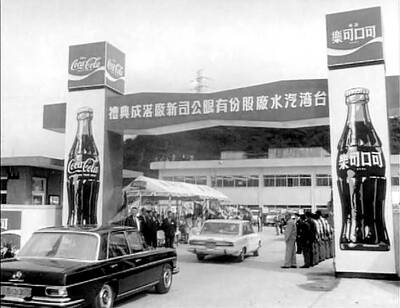The movie industry has been mining superhero comics assiduously over the last decade to produce a positive rash of big-budget superhero films. Some of these have been excellent (Batman Begins from 2005 and even the first X-Men from 2000 and the first Spiderman from 2002), others have disappeared into a well-deserved oblivion (Catwoman from 2004, Daredevil from 2003, and too many others to mention). What both the good and the bad shared were an A-List cast, or at least lead. Guillermo del Toro’s Hellboy, released in 2004, starred Ron Perlman, a much loved actor, but a long way off the A-list, and for that reason it was undeservedly ignored by many. This was a great pity, as it was lovingly crafted, well-scripted, and managed to be both entertaining and thought provoking.
Hellboy II: The Golden Army takes all this a step further, and shares a special place in cinema history as a sequel that doesn’t just continue the story, but which actually departs in new directions, reaching out to new ideas, even while it riffs on established themes. It is so refreshing to see a sequel that is the result of a surfeit of creative energy rather than a cynical attempt to squeeze more money out of an established brand by making a bigger and brasher version of the original.
Having said that, The Golden Army is certainly a bigger movie, with a number of massive set pieces that are designed to blow the audience out of their seats with the overwhelming power of CGI and the other bells and whistles of modern big-budget moviemaking. One is a battle with an elemental — a spirit of the forest brought to life — and the other is a scene set in “the troll market,” a world-within-a-world in the manner of Diagon Alley from the Harry Potter series. These scenes are truly spectacular, but within all this supernatural whizz-bang imagery, Del Torro the storyteller is still hard at work establishing key ideas that move his tale forward.
Del Toro comes back to the Hellboy franchise after his triumph with the Spanish-language Pan’s Labyrinth, a film about the fantasy life of a child trying to come to terms with the conflicts in a family torn apart by the Spanish civil war. Fantasy and reality come into tragic conjunction in Pan’s Labyrinth, and Del Toro clearly believes that fantasy is very much part of our daily lives.
With The Golden Army, he boldly brings this philosophy into a mainstream Hollywood picture. More than that, some of the fantasy figures from Pan’s Labyrinth seem to have also come across on the commute. Del Toro has famously said that he made one film for Hollywood and one film for himself — he is responsible for Blade II (2002) after all — but with the Hellboy series, he seems to have found a story that allows him to blur the distinction.
Hellboy, the creation of graphic artist Mike Mignola, provides ample opportunity for Del Toro to incorporate a moral ambiguity into what on the surface looks like a straightforward superhero story. After all, the title character is a demon released from the depths of Hell who, more by accident than design, ends up working for the “good” guys. But while Hellboy has many outstanding qualities, a fully functioning moral compass is not one of them. Basically, all he really wants to do is become a famous superhero, something the secretive government agency that employs him does everything it can to prevent.
In The Golden Army, it is in fact the bad guys, represented by the stately Prince Nuada, who are the ones with a clear moral purpose. This story taps into the same vein of Celtic mythology from which Lord of the Rings took its inspiration (Is it a coincidence that Del Torro has recently accepted the project to make The Hobbit, the prequel to Lord of the Rings, which is scheduled for release in 2011?), and tells the story of the return of the Elven prince Naruda, who has come back into the human world to avenge the depredations of the human race on the natural world of forest and dell that the creatures of the twilight inhabit. To do this, he must bring together the three pieces of the crown that command the obedience of the golden army of the title. Hellboy is brought in to stop him, which he does mainly to ensure a regular supply of beer and pizza, and plenty of coverage on TV. Perlman creates an immensely appealing demon, but ultimately Hellboy is just in it for kicks, which messes with the superhero stereotype in lots of fun ways.
In fact, The Golden Army is a continuous juggling act, and the skill of the director is in keeping all the balls in the air at once. Like any good performer, Del Toro keeps adding to the complexity of his task, always ready to throw yet another ball into the air. Part of the excitement of the film is to see if he will in fact drop the ball. It is sometimes a close-run thing.
Apart from the battle between worlds, there is the relationship between Perlman’s Hellboy and Selma Blair’s Liz Sherman, a pyrokinetic (she burns up, literally, when she’s angry). This is a continuation from the first installment, and Del Torro is able to keep it edgy, with lots of sharp dialogue that manages to shift gears, mixing comic one-liners with more thoughtful material — the relationship between a big red guy with horns and a tail and a woman who becomes a human fireball when angry is depicted as something very human. (Haven’t we all been there before?)
The Bureau for Paranormal Research and Defense (BPRD), which employs Hellboy, has moments of unsettling similarity to the agency which employs Tommy Lee Jones and Will Smith in Men in Black (1997), but the mood of this film is very different. The strand of wisecracking humor is certainly there in the character of Hellboy’s boss Tom Manning, who is continually and unsuccessfully attempting to bribe his charge into obedience with Cuban cigars, but it goes beyond that. A drunken singalong between Hellboy and Abe Sapien, an aquatic telepath who works for the agency, to Barry Manalow’s Can’t Smile Without You should rank as a classic of fantasy cinema. Tell the truth, you’ve been there too.
But what seems most specifically to distinguish Hellboy: The Golden Army from other superhero films is a quality that might be described as an arthouse sensibility. Del Toro works hard to ensure that the moral ambiguities of life remain intact throughout this film. “I killed that thing,” Hellboy laments, “ and for what. They (the public) don’t even like me.” This after destroying a forest elemental, a spirit of growth, an agent of regeneration that is released briefly in one of the film’s two major CGI set pieces. Hellboy does his heroic thing, but the battle creates huge destruction, and the city folk are inclined to blame rather than thank the demonic creature that saved them. And it is the petulance of Hellboy’s reaction that makes him so endearing, so un-heroic, so much the good-hearted oaf, despite all his biker chic and superhero aspirations.
And buried within the whole Hellboy story is the prophecy that Hellboy will destroy the world. His primary weapon, a right arm made of stone, is the Right Hand of Doom. Both the first and second installments make reference to the fact that this lovable if amoral character is in fact the ultimate destroyer of the earth. This is one of the balls that Del Torro manages to keep flying just below the narrative horizon.
Although Hellboy himself seems like the all-American hero, the elves, and their doomed endeavor to save themselves against the onslaught of humanity, are the heroic figures, and Hellboy himself, something of a clown. Obviously Hellboy overcomes his foes; this film is destined for the cineplex rather than the arthouse after all. But did the good guys really win? Del Toro manages to keep us guessing.

July 28 to Aug. 3 Former president Chiang Kai-shek (蔣介石) reportedly maintained a simple diet and preferred to drink warm water — but one indulgence he enjoyed was a banned drink: Coca-Cola. Although a Coca-Cola plant was built in Taiwan in 1957, It was only allowed to sell to the US military and other American agencies. However, Chiang’s aides recall procuring the soft drink at US military exchange stores, and there’s also records of the Presidential Office ordering in bulk from Hong Kong. By the 1960s, it wasn’t difficult for those with means or connections to obtain Coca-Cola from the

Taiwan is today going to participate in a world-first experiment in democracy. Twenty-four Chinese Nationalist Party (KMT) lawmakers will face a recall vote, with the results determining if they keep their jobs. Some recalls look safe for the incumbents, other lawmakers appear heading for a fall and many could go either way. Predictions on the outcome vary widely, which is unsurprising — this is the first time worldwide a mass recall has ever been attempted at the national level. Even meteorologists are unclear what will happen. As this paper reported, the interactions between tropical storms Francisco and Com-May could lead to

A couple of weeks ago the parties aligned with the People’s Republic of China (PRC), the Chinese Nationalist Party (KMT) and the Taiwan People’s Party (TPP), voted in the legislature to eliminate the subsidy that enables Taiwan Power Co (Taipower) to keep up with its burgeoning debt, and instead pay for universal cash handouts worth NT$10,000. The subsidy would have been NT$100 billion, while the cash handout had a budget of NT$235 billion. The bill mandates that the cash payments must be completed by Oct. 31 of this year. The changes were part of the overall NT$545 billion budget approved

No one saw it coming. Everyone — including the Chinese Nationalist Party (KMT) — expected at least some of the recall campaigns against 24 of its lawmakers and Hsinchu Mayor Ann Kao (高虹安) to succeed. Underground gamblers reportedly expected between five and eight lawmakers to lose their jobs. All of this analysis made sense, but contained a fatal flaw. The record of the recall campaigns, the collapse of the KMT-led recalls, and polling data all pointed to enthusiastic high turnout in support of the recall campaigns, and that those against the recalls were unenthusiastic and far less likely to vote. That